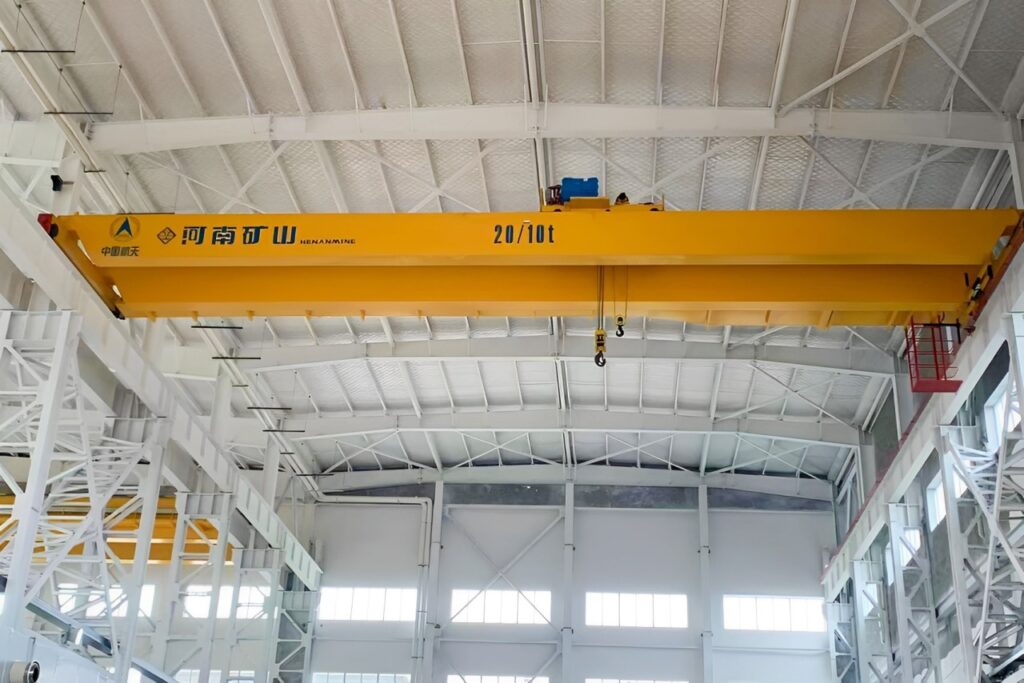Cranes play a critical role in modern industrial production across a wide range of sectors, including construction, ports, warehouses, and manufacturing. As equipment workloads increase and operational environments become more complex, crane malfunctions can lead to costly downtime, safety risks, and operational inefficiencies. Traditional methods of crane maintenance, which often rely on scheduled inspections and manual troubleshooting, are no longer sufficient to meet the demands of today’s fast-paced industrial settings.
However, the advancement of crane fault diagnosis technologies has revolutionized, especially with the introduction of Artificial Intelligence (AI) and machine learning. These technologies are not only enhancing the predictive maintenance capabilities of cranes but are also helping to significantly reduce unplanned breakdowns, improve safety, and optimize operational efficiency.
Post Contents
The Role of AI in Predicting Crane Failures
AI-powered fault diagnosis systems use sensors, real-time data collection, and advanced analytics to monitor crane components such as motors, hoists, winches, and electrical systems. By processing this vast amount of data, AI models can identify patterns that are indicative of potential failures, well before they occur.
For example, overhead cranes, which are commonly used in large-scale manufacturing facilities and warehouses, rely heavily on precise movements and control systems. AI systems can monitor the strain on the crane’s structure, and the condition of the lifting mechanism, and even predict wear on critical components such as the trolley and gantry. By doing so, the system can forecast potential issues, such as abnormal wear or motor overheating, allowing operators to perform targeted maintenance rather than waiting for a failure to occur.

Preventing Failures in Gantry Cranes with AI
Another area where AI is making a significant impact is in gantry cranes, which are extensively used in ports and container terminals. These cranes handle heavy loads and operate under demanding conditions, making them prone to mechanical wear and tear. AI-based predictive maintenance tools can assess vibrations, load shifts, and mechanical stress, identifying small issues before they escalate into major failures.
For instance, AI can analyze real-time vibration data from sensors placed on various crane components to detect early signs of misalignment or imbalance. If the AI model detects any irregularities, the system can alert the maintenance team to inspect the affected parts, preventing potential catastrophic failures. By optimizing the maintenance schedule and reducing the frequency of unnecessary checks, AI ensures that the crane operates at peak performance, with minimal downtime.
Benefits of AI in Crane Fault Diagnosis
- Enhanced Predictive Maintenance: AI systems can predict failures with high accuracy, enabling businesses to schedule maintenance at the optimal time, avoiding unnecessary inspections and costly repairs.
- Reduced Downtime: By identifying issues early, AI reduces the likelihood of sudden breakdowns, minimizing downtime and keeping operations running smoothly.
- Cost Savings: Businesses can save significant costs over time by extending the lifespan of crane components and reducing the need for emergency repairs.
- Improved Safety: Predicting and preventing failures before they occur leads to safer working environments, as crane operators are less likely to encounter unexpected mechanical issues during operations.
Case Studies and Industry Examples
- Bridge Cranes in Automotive Manufacturing: A leading manufacturer of automotive parts implemented an AI-based fault diagnosis system for its bridge cranes used in assembly lines. The AI system helped predict motor failures, reducing the risk of production delays and improving the overall efficiency of the manufacturing process.
- Port Gantry Cranes: At a major international port, AI-powered sensors were installed on gantry cranes to monitor structural integrity and mechanical performance. By predicting component failures, the port reduced crane downtime by 25%, significantly improving throughput and operational efficiency.
Conclusion
AI-driven fault diagnosis technology is transforming the way cranes are maintained and operated. By providing real-time insights into the condition of critical crane components, AI not only predicts potential failures but also helps operators avoid them, ensuring maximum uptime and safety. As industries continue to adopt these advanced technologies, cranes, such as bridge cranes and gantry cranes, will become more reliable, efficient, and cost-effective.
Incorporating AI into crane maintenance practices is no longer a luxury; it is quickly becoming a necessity for companies aiming to stay competitive in an increasingly demanding industrial landscape. With the ability to prevent costly breakdowns and optimize maintenance schedules, AI represents the future of crane operations.